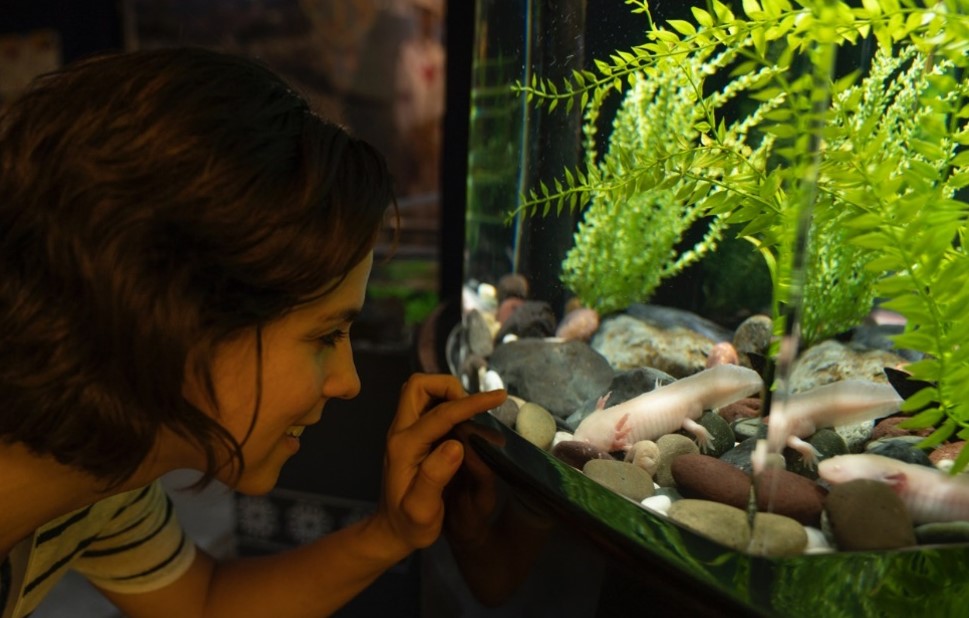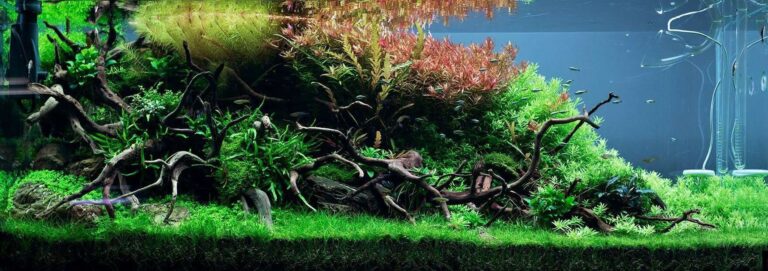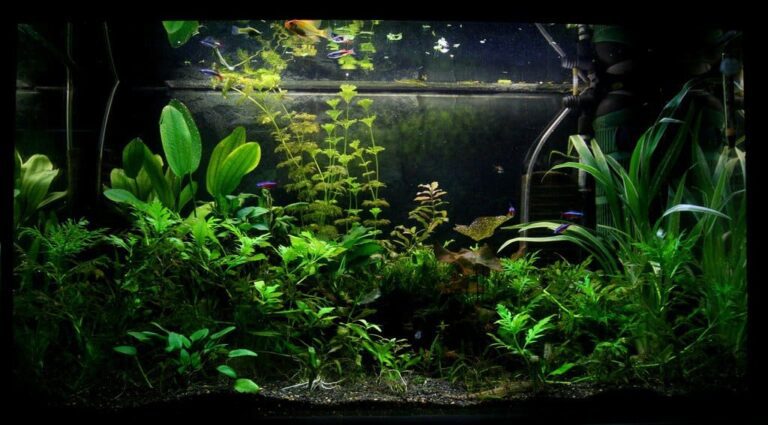If you have an aquarium in your living space, then you know how important a filter is in maintaining a clean and healthy environment for your fish.
Uneaten food, excrement, and the overall ammonia level can build up to toxic quantities in the water if not removed. These can be fatal for your fish.
Aquarium plants are great at filtering out toxic nitrogen elements from fish tanks. However, not all aquatic plants can withstand the confining conditions synonymous with aquariums.

Enter Pothos, popularly known as “devil’s ivy.” If there’s a plant that is built to withstand harsh environments, it’s Pothos.
What about Pothos in fish tanks makes them so effective in keeping aquariums clean? This guide deeply delves into everything you need to know about this natural aquarium filter.
What Is Pothos?
Pothos (Epipremnum aureum), also called “devil’s ivy,” is a common climbing or trailing houseplant known for its extreme hardiness. These emergent plants can eradicate harmful toxins in the air, therefore purifying indoor air.
It is known for its luscious heart-shaped leaves that come in several colors, including green and yellow, or a beautiful variation of the two.
Pothos is a hardy plant and is hard to kill. It will survive the harshest conditions. It can grow in dimly lit and near-dark conditions and requires little to no care to thrive.
If the aquarium fish in your tank are notorious for killing aquatic plants, you don’t have to worry about Pothos suffering the same fate. Their hardiness makes them a popular choice in fish tanks and hydroponic systems.
How Does Pothos Work?
The plant Pothos works as a natural aquarium filter. While it won’t mechanically remove particles from your fish tank, there are several other ways it works to keep your aquarium water clear.
For starters, Pothos will filter out nitrates from the water. It is more effective at doing this compared to other aquarium plants because its leaves grow above the water surface, leaving only the Pothos roots in the water. This allows it to grow much faster, which also means the rapid removal of nitrates from the aquarium.
Pothos is also effective in battling algae. Too much algae in your fish tank is often a sign of nutrient deficiency. It could result from having a higher-than-average nitrate level in the aquarium or too much light exposure.
Given Pothos’s effectiveness at curbing the nitrate level in fish tanks, having these plants in your aquarium will slowly mitigate algae growth and even eradicate it.
If you have killer fish in your tank, the omnivorous kind that eats anything and everything in their path, the only aquatic plant that can survive in your aquarium is Pothos. The reason for this is simple and has to do with the way they grow.
Pothos plants have a thick and powerful root system. Most omnivorous fish don’t bother chewing through them because of how hard the roots are.
This makes Pothos the natural choice for aquarium enthusiasts with killer fish breeds. It will also keep your fish tank clean and enhance its overall aesthetic. It’s a win-win.
How to Use Pothos in Fish Tanks
So far, we’ve established that Pothos in fish tanks is a great idea if you’re looking for a sturdy and natural solution to filtering your aquarium water. The question then becomes: What is the best way to grow Pothos in aquariums?
To answer this question, you first need to understand how Pothos grows in water.
Right off the bat, it is possible to grow the plant underwater. However, be prepared for it to be painfully slow due to the low levels of oxygen and carbon dioxide in the water compared to the levels available in the air.
There’s also a good chance that the leaves won’t develop well, which defeats the purpose of having the Pothos plant in your aquarium in the first place.
You also don’t want to get live Pothos and submerge it in the water. That’s not how it works. Doing this will eventually kill the plant, adding even more nitrates into the aquarium.
With that in mind, Pothos is classified as an ivy plant. This means that it grows vines. The best thing to do would be to spread the Pothos vine around the top of the tank to keep the leaves away from the water. That way, only the roots are submerged.
You don’t need a massive plant, either. You would be surprised by the number of roots a single Pothos leaf can grow in water.
If you’re buying a new plant for your aquarium, ensure you carefully wash off all traces of dirt and fertilizer on the roots. The last thing you want is to contaminate your fish tank with harmful chemicals.

Problems You Might Encounter While Using Pothos in Fish Tanks
Perhaps you’ve heard that Pothos plants can be poisonous and are worried about the potential implications on your aquarium. Let’s start by dispelling a few misconceptions about these wonderful plants.
Pothos plants do not harbor poison. Their stems and leaves contain an element known as calcium oxalate, which exists in the form of tiny insoluble shards of crystal. If ingested, they can cause discomfort and, in some instances, can be toxic to humans and pets.
These crystal shards can also tear the delicate mucous membrane of fish and other critters you might have in your aquarium. It is partly the reason why Pothos stems and leaves should always remain above the water’s surface.
Since there’s no evidence that the plant’s roots (the parts submerged in water) contain calcium oxalate, Pothos is non-toxic to fish, making it safe for your aquarium.
Bottom Line
All in all, the benefits derived from having Pothos in fish tanks override their potential drawbacks. They are a safe and natural way to filter out nitrates, maintaining a clean and healthy habitat for your fish and aquarium critters.
In the meantime, are you in the market for a canister filter? Check out our top picks for the year.






